Astrophotos of the week: The Dolphin’s Head Nebula, The Christmas Tree Nebula and More!
15th Dec 2023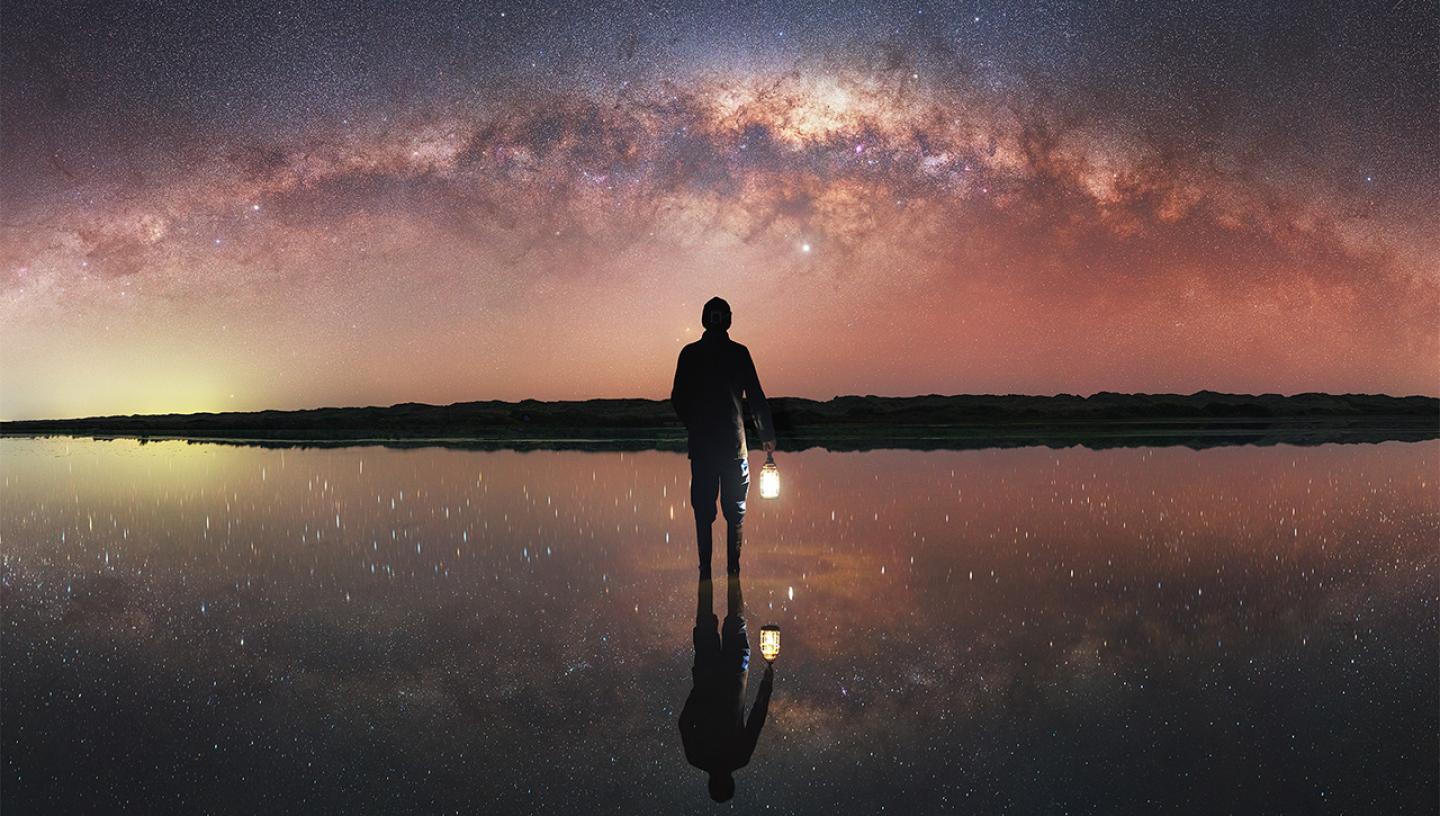
Astrophotos of the week is back – embark on an interstellar voyage with our latest selection of the best space images from amateur photography artists!
In this edition of astrophotos of the week, prepare to be enthralled by cosmic wonders: the mesmerizing Dolphin’s Head Nebula and the iconic Horsehead Nebula, the festive Christmas Tree Nebula and Cassiopeia constellation!
As always, we have searched for these stunning images of celestial wonders on social media. For these astrophotos of the week they all come from Facebook.
Donald Emmel’s Christmas Tree Nebula
As the festive season is in full swing, we open our latest collection with Donald Emmel’s image of NGC2264 – The Christmas Tree Nebula. Emmel’s groundbreaking perspective unveils the celestial tapestry of this stellar wonder, offering a captivating glimpse into the heart of the cosmic creation.
NGC2264, known as The Christmas Tree Nebula, is an astronomical marvel located in the constellation Monoceros. This nebula is a stellar nursery, where the magic of stellar birth unfolds amidst the vast cosmic expanse. The intricate branches and tendrils of gas and dust create a celestial spectacle reminiscent of a holiday fir, adding a touch of cosmic enchantment to the universe.
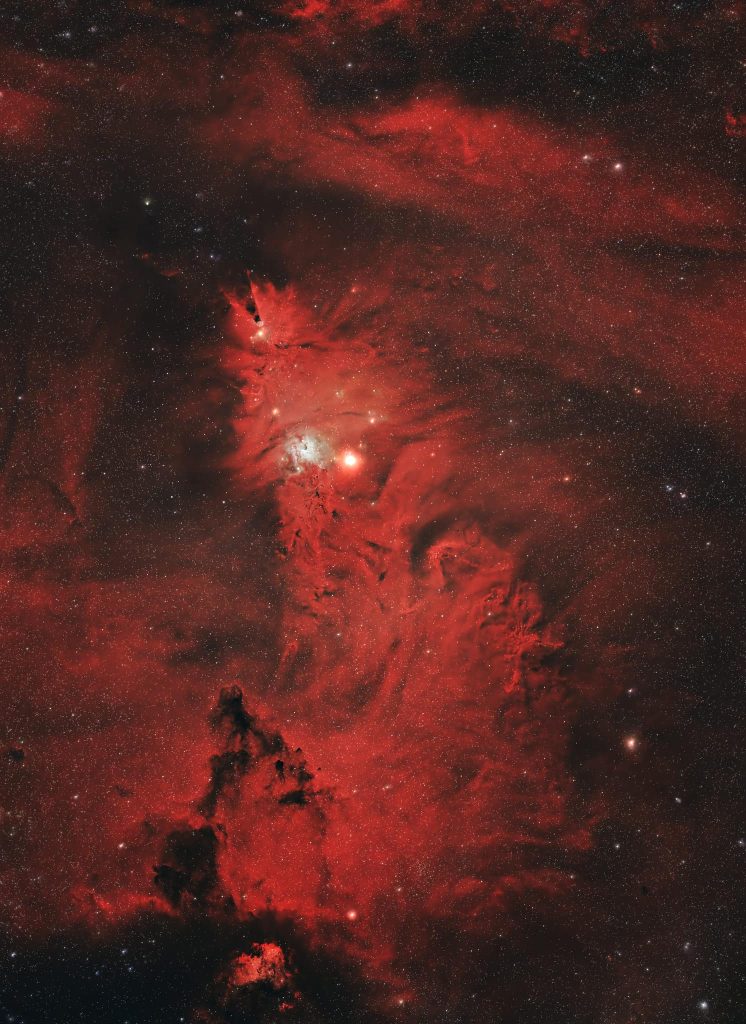
Image Credit: Donald Emmel
Minh Truong Nguyen’s Dolphin’s Head Nebula
Minh Truong Nguyen’s portrayal of the Dolphin Head Nebula stands as a rare and exceptional image. As the author explained, its rarity is accentuated by the unique challenges posed by its low rising in the high latitudes of the northern hemisphere and its subdued surface brightness.
The prominent SH2-308 emission nebula is situated approximately 5,200 light-years away in the Canis Major constellation. This celestial marvel is renowned for its distinction as a ‘space bubble’. It originates from the powerful radiation emitted by a luminous and exceptionally hot Wolf-Rayet central star. The rapid winds emanating from this Wolf-Rayet star give rise to the distinct bubble-shaped nebula. They gather and sweep up material from a preceding stage of evolution characterized by slower movement.
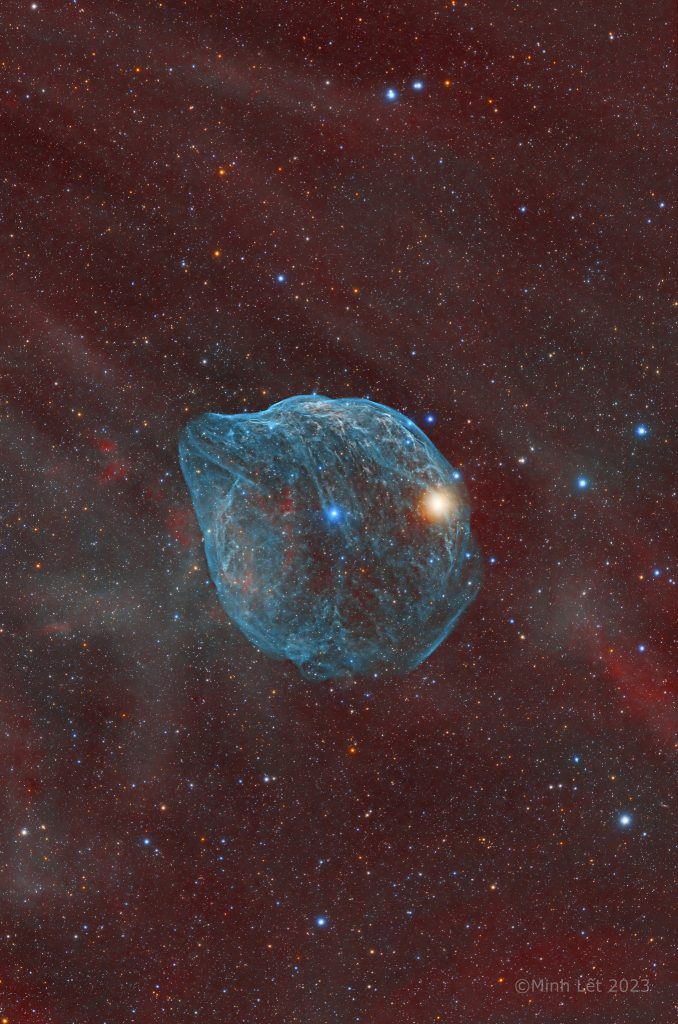
Image Credit: Minh Truong Nguyen
The Horsehead by Kurtis Markham
Kurtis Markham shared a remarkable starless image of IC 434 – The Horse’s Head, offering a unique perspective into the celestial dynamics often obscured by the brilliance of stars.
The author mentioned that this portrayal unveils the turbulence sculpted by powerful magnetic forces, showcasing concentrated streams of dust and the ionization of hydrogen gases illuminated by the nearby bright star, Sigma Orionis. The lower segment of the nebula is aglow with the ionization resulting from the birth of nascent stars. Captured by the Wilton Woods Observatory in Alexandria, Virginia, the image illuminates the cosmic intricacies within the light-polluted confines of Bortle 9 skies.
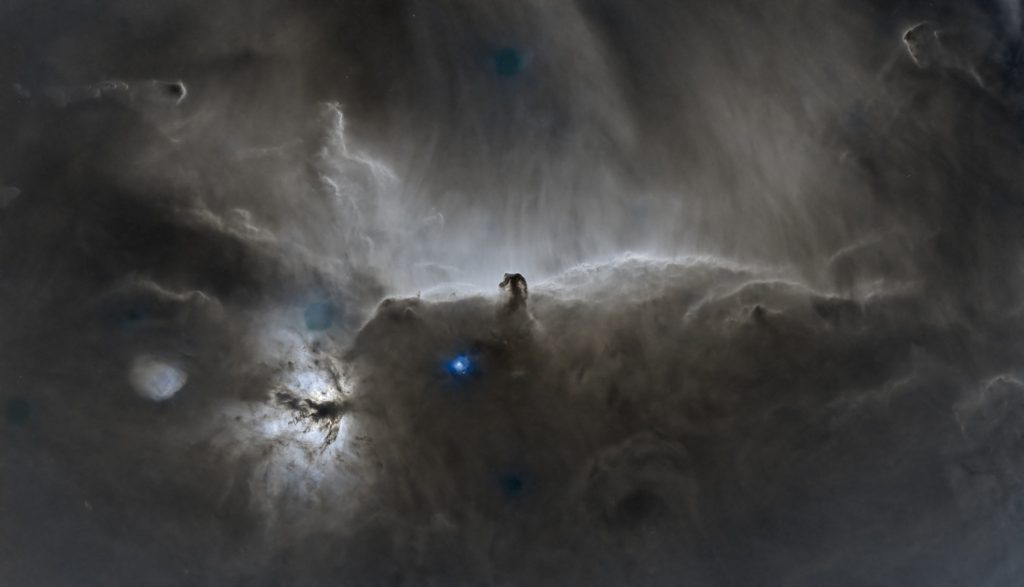
Image Credit: Kurtis Markham
The Triangulum Galaxy by Kyle Brewer
Kyle Brewer shared his best capture of the night, featuring the Triangulum Galaxy. Given its proximity and apparent size in the night sky, the Triangulum Galaxy is a popular target for astrophotographers. The Triangulum Galaxy is relatively close to Earth, approximately 2.7 million light-years away, making it one of the most distant objects visible to the naked eye under dark skies. Also known as Messier 33, it is a spiral galaxy located in the constellation Triangulum. And it considered to be the third-largest galaxy in our Local Group, following the Milky Way and the Andromeda Galaxy.
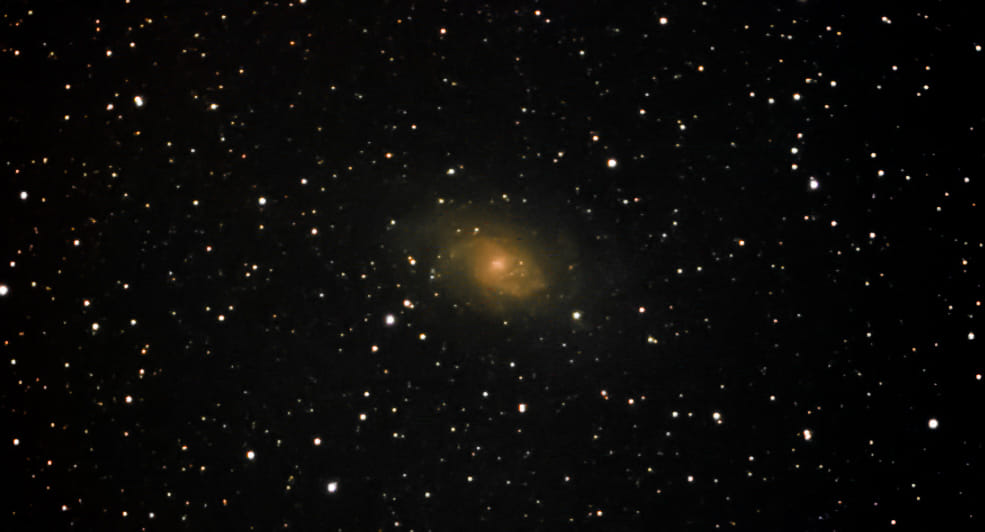
Image Credit: Kyle Brewer
Corey Dallmeyer’s ghost of Cassiopeia
Corey Dallmeyer delightedly shared a glimpse of the celestial magic tonight with quick cell phone shots, capturing the ethereal beauty of the Ghost of Cassiopeia! Cassiopeia is a prominent and easily recognizable constellation in the northern hemisphere. Named after the queen in Greek mythology, Cassiopeia is known for its distinctive “W” or “M” shape, depending on its orientation in the sky.
It is one of the 48 constellations listed by the 2nd-century Greek astronomer Ptolemy and is circumpolar, meaning it is visible throughout the year in certain latitudes.
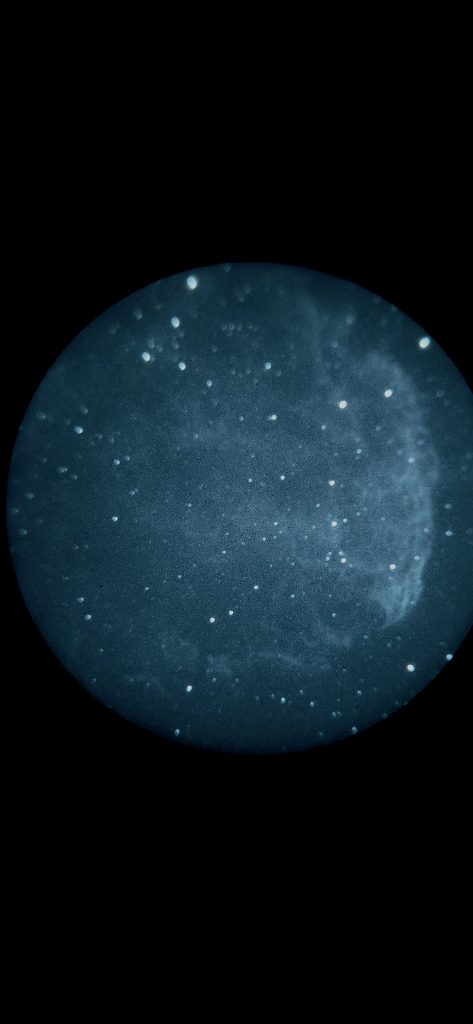
Image Credit: Corey Dallmeyer
Saturn with its four Moons by Eric Sussenbach
On December 9, 2023, Eric Sussenbach captured a mesmerizing image of Saturn adorned by its entourage of four moons: Rhea, Mimas, Dione, and Tethys. The celestial spectacle was accentuated by the captivating shadow play during their transits.
This celestial rendezvous painted a vivid tableau in the night sky. A beautiful moment of celestial harmony expertly preserved through Sussenbach’s lens!
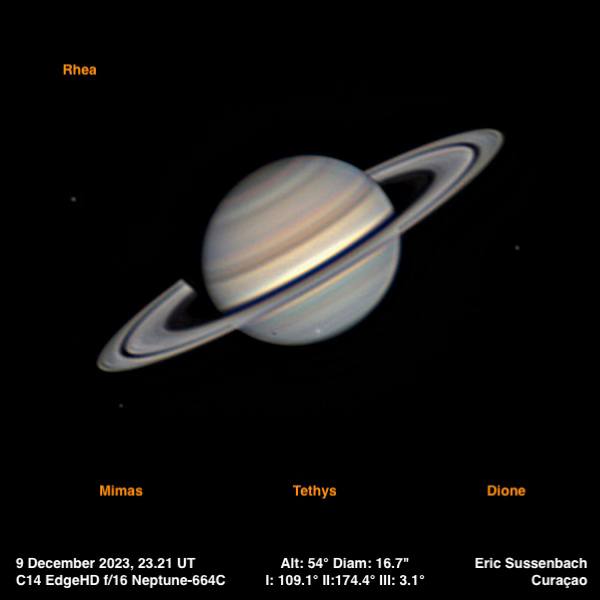
Image Credit: Eric Sussenbach
Another Horsehead Nebula image by Marcelo Adorna Fernandes
Marcelo Adorna Fernandes unveils another stunning image of the Horsehead Nebula in our selection. Its uniqueness lies in using an Alpha Hydrogen filter. The photo presents a mesmerizing display of the nebula in shadows of brown and green colors.
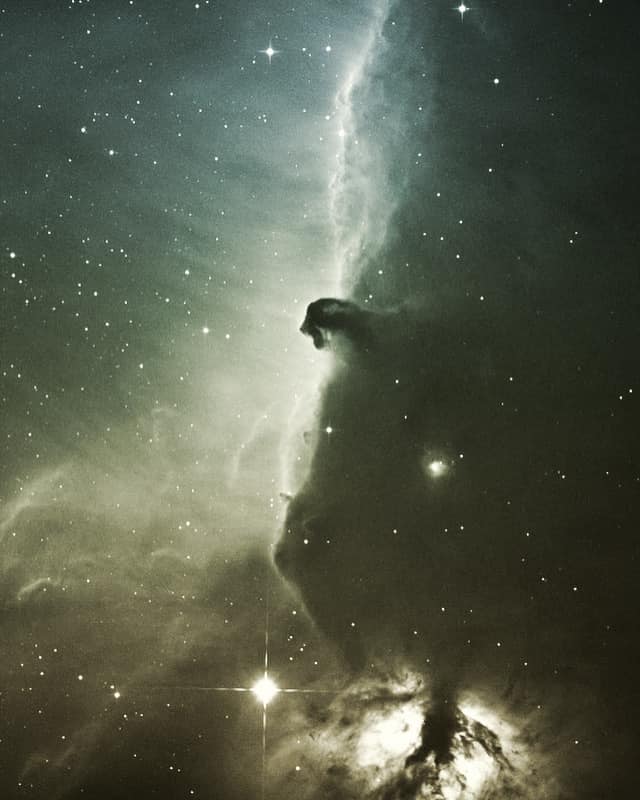
Image Credit: Marcelo Adorna Fernandes
The Orion Nebula by John Eugenio
The Orion Nebula, M42, will almost certainly be a staple of our astrophotos of the week. It’s too stunning to ignore! This week, John Eugenio shares a captivating image. As the author says, this cosmic masterpiece resulted from a 15-minute exposure. The celestial snapshot was taken in Balagtas, Bulacan, Philippines, under Bortle 6-7 skies.
The Orion Nebula, identified as Messier 42 (M42), stands out as a widely known and distinctive nebula visible in the nocturnal heavens. The Nebula is situated within the Orion constellation. It serves as a cosmic nursery, fostering the birth of fresh stars amid an expansive cloud of gas and dust.
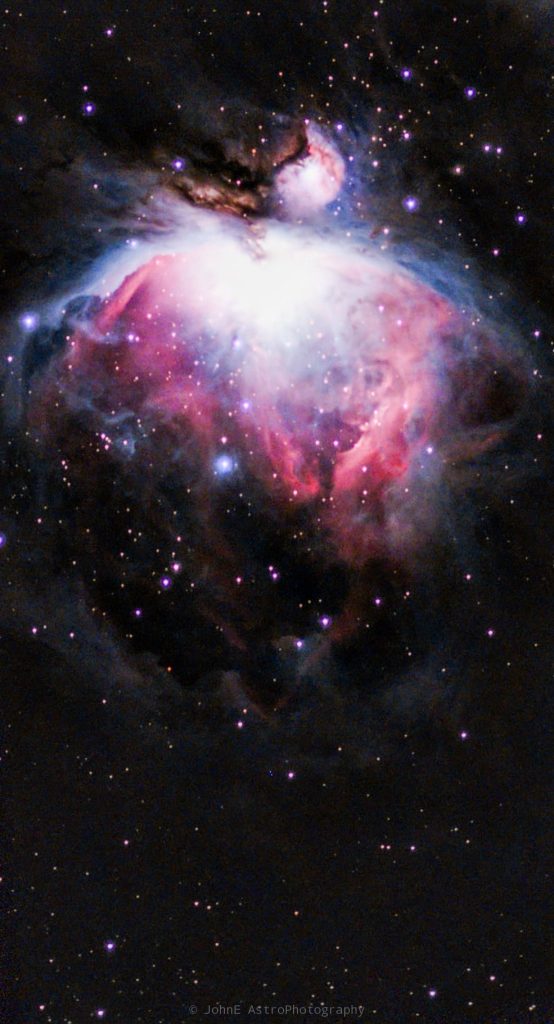
Image Credit: John Eugenio
And the Orion Nebula again – by Drago Salvatore
Drago Salvatore presents a distinct perspective of the Orion Nebula. It is showcasing a unique palette of subtle yellow, blue, and green hues. In this rendition, the nebula takes on a different visual character. It captures the ethereal beauty of this celestial wonder through Salvatore’s lens.
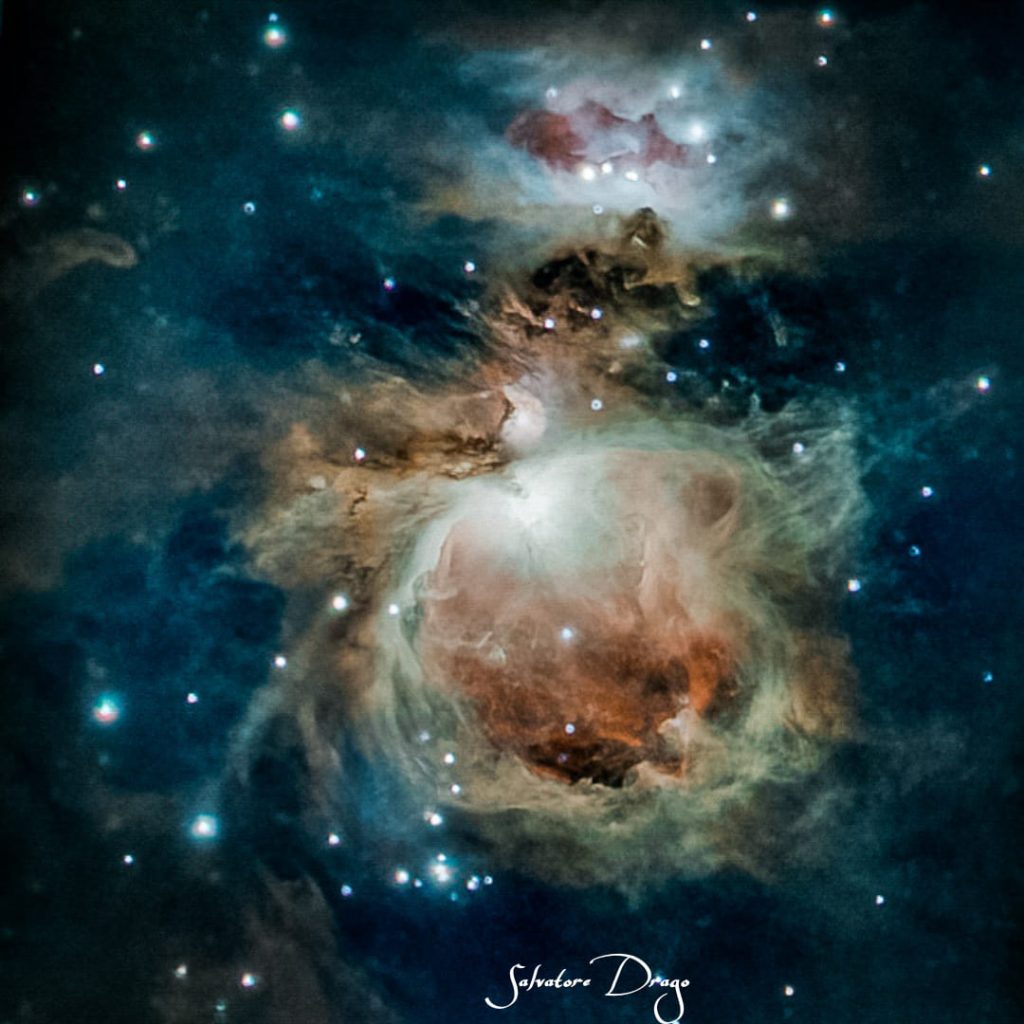
Image Credit: Drago Salvatore
Join us for more astrophotos of the week as we explore the universe through the lenses of these everyday stargazers! Dear astrophotographers, watch out, perhaps the next week you will find your image on our website among the best ones!
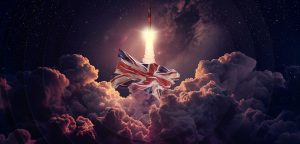





Thank you for your comment! It will be visible on the site after moderation.